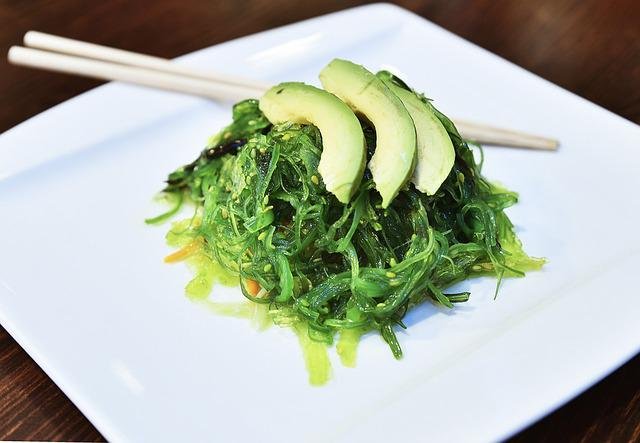
Seaweed is a food rich in properties and nutritional values that we often do not consider. So here’s why eating algae.
Marine algae have long been part of the daily diet of those peoples that rose close to the sea, used like fruit and vegetables.
There are many ancient documents that denote the use of seaweed in the cuisine of China and Japan, considered by these populations to be a very important source of well-being. Algae have been on our planet for millions of years and have undergone little change over time.
They contain chlorophyll which they synthesize based on the sunlight that manages to reach them. Green algae are those that grow less deep, browns grow at medium depth while red algae are those that grow deeper. The algae that we can find in shops today mainly come from Japan or Brittany, where there is a large consumption of these vegetables.
Properties of algae and their nutritional value
Algae (of any type) are a very important source of iodine, useful for preventing thyroid disorders and to stimulate the natural metabolism. Algae are also an excellent source of mineral salts such as calcium, iron, zinc, copper, sodium, magnesium, potassium and phosphorus.
They contain much more protein than ground vegetables, low in fat and several vitamins including vitamins A and K and the B complex. In some types of algae, such as Nori algae and spirulina (which is however a lake algae), a good dose of vitamin B12 appears to be present, which however does not seem to be in its most bioavailable form.
Furthermore, there are studies that demonstrate the ability of some algae to neutralize, through chelation, heavy metals and toxic elements that we can ingest with food. Finally, the presence of mucilaginous substances make algae a valid help in regulating intestinal functions.
What are the types of seaweed most used in cooking?
Let’s see below what are the most common seaweeds and how we can use them in the kitchen.
✓ Kombu seaweed
The kombu seaweed is a brown seaweed with leaves 1 to 3 meters long which, when dried in the sun, comes in black, long and thick strips. Kombu (also known as Kelp) is an excellent purifier for the intestine and is rich in glutamic acid, a substance then reproduced industrially as sodium glutamate (a flavor enhancer). When cooked, this seaweed has the property of softening the other ingredients with which it is cooked. It is an excellent base for broths and soups.
✓ Hijiki seaweed
It is a brown alga native to Japan. It comes with cylindrical leaves that resemble tree branches. Thanks to its high calcium content, in Japan it makes it a traditional remedy for strengthening nails and hair. When soaked, these algae increase their volume a lot, so it is good to start with the preparation of a small portion. They are used in combination with vegetables, tofu or cereals.
✓ Nori seaweed
It is a red alga that grows spontaneously in many seas around the world. It is used rolled together with vegetables or fish and is the basic ingredient of some Japanese dishes. Rich in vitamin A, it also goes well with fatty foods as it promotes digestion.
✓ Dulse seaweed
It is a red algae native to the Atlantic and is richer in iron than the others. Its consumption dates back to ancient times, when it was a common ingredient in the cuisine of the peoples of northern Europe and Canada. If left to soak for a long time, it can also be eaten raw. It goes well with vegetables and cereals.
✓ Agar Agar
This element is commercially available as bars or flakes and is used to thicken sweet or savory dishes. It comes from red algae and is rich in gelatinous and mineral substances. Calorie-free it can also be a mild laxative. The quantity to be used varies according to the final consistency that the prepared dish must have.
✓ Sea Beans
They are found on the fish counters of many supermarkets. They are particularly tasty seaweeds that are prepared by tossing them for a few minutes in a pan with garlic and oil or they can be used as a condiment for pasta or salads.
✓ Wakame seaweed
The wakame seaweed is a brown seaweed native to Japan that looks like a dark, jagged leaf. In the center of the alga there is a thick mucilaginous rib, characteristic of wakame. Its properties are similar to the Kombu seaweed and its flavor is very delicate. For this reason, wakame seaweed goes well with rice, pasta, vegetables, tofu and fish. Wakame, like kombu, also has the property of softening the food it is cooked with.






